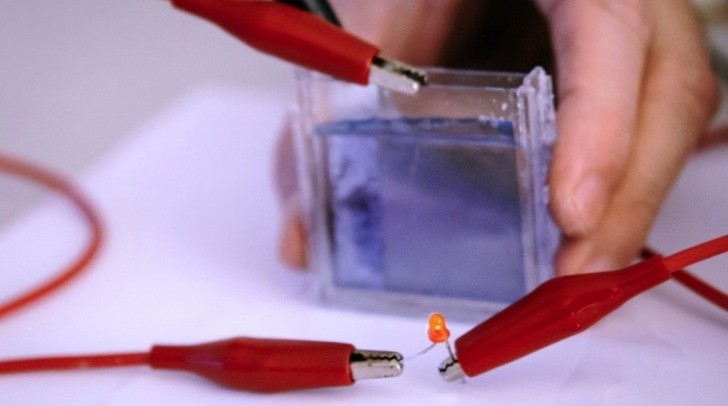There are two types of tinted windows in the automotive world at the moment - those that are permanently darkened via chemical processes right in the factory and the electrochromic ones that react to light but need a power source to start offering some shade.
Wouldn’t it be nice to have another one that does the same during daytime but turn clear at night without consuming anything? A team of scientists from the Nanyang Technological University (NTU) found the solution and it does more than that, like powering electric devices inside your car.
Their new self-tinting window technology requires no electricity to work and turns into a nice shade of blue during a bright day, cutting light penetration by about half. And it does another cool thing - as it darkens, the glass actually stores electricity so it’s basically a transparent battery you can use to power different auxiliary systems.
“Our new smart electrochromic window is bi-functional; it is also a transparent battery,” project leading Prof Sun Xiaowei explains. “It charges up and turns blue when there is oxygen present in the electrolyte – in other words, it breathes.”
One of the sheets is coated with an additional layer of pigment known as Prussian Blue while the other is attached to a thin strip of aluminum foil. The two glass sheets are connected by typical electric cables and when the circuit between them is broken, a chemical reaction starts between the pigment and the dissolved oxygen in the electrolyte, causing the glass to turn blue.
This is also an indication of electricity being stored, so if you want the window to whiten back again you have to close the electrical circuit and discharge the “battery”. In a car you can do this by redirecting the power to interior lighting, charing your phone or other electrical conveniences.
Which should turn very useful in plug-in electric vehicles and hybrids, to conserve battery for powering the wheels. Of course, the new tech could be also useful for buildings in the same manner to lower the electricity bill.
The NTU team is currently enhancing their new invention and is looking forward to collaborating with the industry to commercialize the self-tinting glass in the near future.
Their new self-tinting window technology requires no electricity to work and turns into a nice shade of blue during a bright day, cutting light penetration by about half. And it does another cool thing - as it darkens, the glass actually stores electricity so it’s basically a transparent battery you can use to power different auxiliary systems.
“Our new smart electrochromic window is bi-functional; it is also a transparent battery,” project leading Prof Sun Xiaowei explains. “It charges up and turns blue when there is oxygen present in the electrolyte – in other words, it breathes.”
How the wizardry works
Unlike a normal car window , which is made out of two glass panels sandwiching an ultra thin polyvinyl butyral layer in between, this self-tinting one contains liquid electrolyte placed in between two glass sheets that are coated with indium tin oxide (ITO), commonly used as transparent conductive coatings for TV displays.One of the sheets is coated with an additional layer of pigment known as Prussian Blue while the other is attached to a thin strip of aluminum foil. The two glass sheets are connected by typical electric cables and when the circuit between them is broken, a chemical reaction starts between the pigment and the dissolved oxygen in the electrolyte, causing the glass to turn blue.
This is also an indication of electricity being stored, so if you want the window to whiten back again you have to close the electrical circuit and discharge the “battery”. In a car you can do this by redirecting the power to interior lighting, charing your phone or other electrical conveniences.
Which should turn very useful in plug-in electric vehicles and hybrids, to conserve battery for powering the wheels. Of course, the new tech could be also useful for buildings in the same manner to lower the electricity bill.
The NTU team is currently enhancing their new invention and is looking forward to collaborating with the industry to commercialize the self-tinting glass in the near future.
